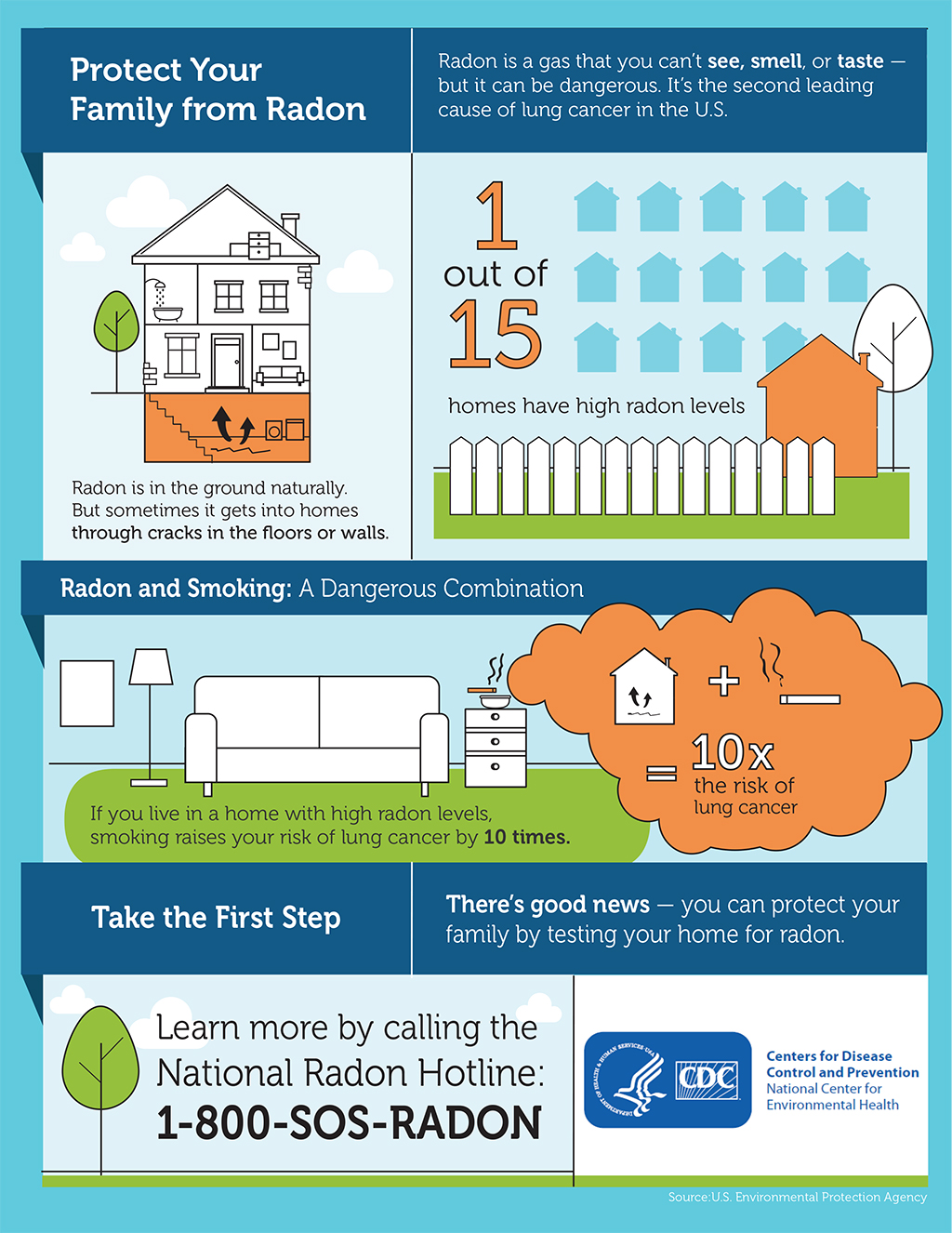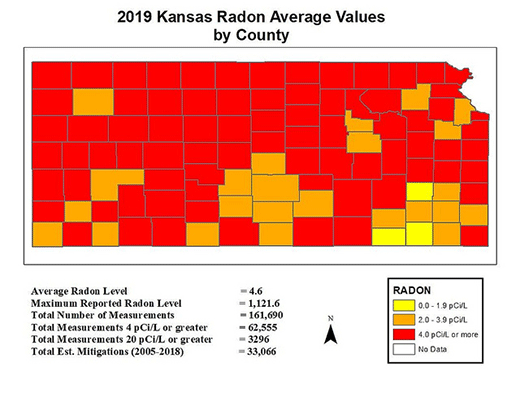Radon


Where does radon come from?
Radon comes from the natural radioactive decay of radium and uranium found in the soil beneath the house. The amount of radon in the soil depends on soil chemistry, which varies from one house to the next. Radon levels in the soil range from a few hundred to several thousands of pCi/L. The amount of radon that escapes from the soil to enter the house depends on the weather, soil porosity, soil moisture, and the suction within the house.
How does radon get into the house?
Houses act like large chimneys. As the air in the house warms, it rises to leak out the attic openings and around the upper floor windows. This creates a small suction at the lowest level of the house, pulling the radon out of the soil and into the house.
How serious a risk is radon?
According to the following EPA radon risk chart, radon is a serious health problem.
If 1,000 people were exposed to this level over a lifetime who are:
Annual
Radon Level.........Smokers.....................Never Smokers
20 pCi/L.......26% or 260 people......4% or 36 people could get lung cancer
10 pCi/L.......15% or 150 people......2% or 18 people could get lung cancer
4 pCi/L..........6% or 62 people.......0.7% or 7 people could get lung cancer
2 pCi/L..........3% or 32 people.......0.4% or 4 person could get lung cancer
What is the general procedure for testing a home for radon?
Two standard methods exist for testing a home for the presence of radon gas. Short-term testing methods are designed to provide a quick radon value. Short-term tests can be as short as 48 hours and as long as 90 days. Long-term testing methods are designed to provide an annual average of radon gas. Long-term tests run for a minimum of 90 days, and usually for 6 to 12 months. The EPA recommends performing a short-term test for radon. If that test comes back below the EPA Action Level ( 4.0 pCi/L), then no further immediate action is warranted.
Where can I purchase a radon test kit?
Consumers can purchase radon short-term test kits for their homes from a number of outlets:
- Midway District K-State Research & Extension Offices. $6.00, inclusive of all costs.
- Most home improvement stores also stock or can order a variety of test kit brands.
- Manufacturers, many of whom are listed elsewhere at www.kansasradonprogram.org.
~Information provided by Kansas Radon Program

